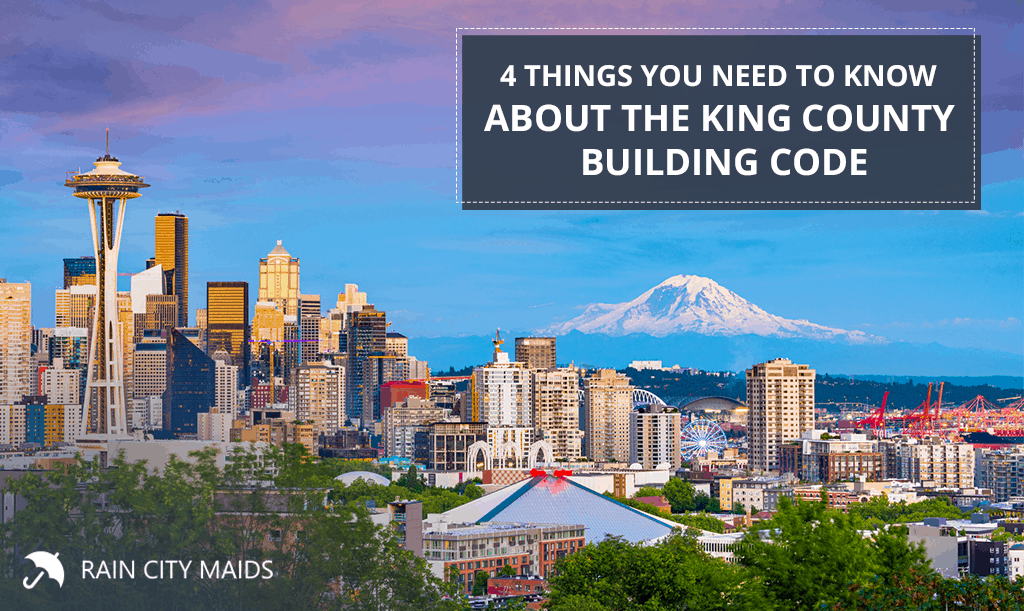If you’re planning on making changes or repairs to your house, or even a building you own, it’s very important that you know and comply with the King County Code, especially the Title referring to building and construction standards. It’s a very detailed and complete document that outlines the minimum standard for all construction done in King County, and penalties and fees apply to those that go outside of it. It also details the cost of King county building permit inspections and King County setback requirements.
As with many government codes, it’s a very specific and complex document, so you’re not expected to peruse at your leisure. But there are a couple of things that stand out from it due to how common they are, and you should be familiar with them. Just remember to have a plan to enjoy your newly remodeled home as soon as construction is done!
Here are four things you need to know about the King County Building code in case you’re planning on expanding or remodeling your home.
Nuisances
According to the King County Code Title 16, which refers to the Building and Construction standards, any of the following acts is considered a nuisance, and as such is liable to formal complaints: overcrowding a room with occupants; not enough ventilation or light sources; poor sewage or plumbing; uncleanliness as defined by a health officer; any sources that leave the air, food, or water in poor state.
Other nuisances included, but not defined, in this code are the “public nuisance known at common law or in equity jurisprudence,” so make sure that you are familiar with those. Finally, there are nuisances that are considered hazards to people, such as abandoned wells, elevator shafts, basements, loose lumber, trash, and even vegetation.
On emergency exits and security
The KCC also includes a Building Security Code, which aims to establish minimum standards for buildings to be as break-in-proof as possible. It details, for example, that all exit doors must allow people a 180 degrees view through windows or viewports. It also mentions the need for doors to have deadbolt locks that shall not be replaced with surface-mounted locks, and how sliding doors and windows regulated by the code are required to have latching devices that can only be operated from the inside.
On the other hand, the code also includes two different subsections detailing the importance of not blocking or obstructing general exits, emergency escapes, and rescue windows by using the above-mentioned security devices. It specifically lines that bars, grilles, grates or similar security devices can only be installed on these escape routes if they have approved release mechanisms that can be handled easily from the inside of the building or smoke-activated ones.
On chimneys
Do you have a masonry chimney? Repairing it might be more complicated than you thought. For example, all chimneys have to be repaired adhering to what’s stipulated in the IBC 2111 or they will be removed. This applies even to pre-manufactured chimneys, so pay attention to its measurements and constructions or it might end up being even costlier than just having it built custom. It also details many scenarios where the part above the roofline shall be braced down, and at least one in which the whole chimney will be taken down to the foundation.
However, if only the firebox is the problem, then the existing foundation can be used for the new chimney to be rebuilt, instead of being torn down right to the bottom. This applies to any structure where the firebox has been damaged.
The rate of permit and inspection fees
As you can imagine, the code lists the fees that are charged for permits and inspection work in case you’re planning on adding things to your dwelling unit. Plumbing permits, for example, are some of the most common, but that doesn’t mean they’re very economical.
These are the plumbing permit fees for fixtures or traps, including water, drainage and vent piping, other than backflow devices and assemblies:
| One fixture or trap | $140.00 |
| Two to three fixtures or traps | $210.00 |
| Four to six fixtures or traps | $298.00 |
| Seven to ten fixtures or traps | $333.00 |
| More than ten fixtures or traps | $333.00 (This is a base fee for ten fixtures or traps, with each additional one costing $8.00) |
The following are plumbing fees, but for backflow devices or assemblies only:
| One device or assembly | $130.00 |
| Two to three devices or assemblies | $210.00 |
| Four to six devices or assemblies | $298.00 |
| Seven to ten devices or assemblies | $333.00 |
| More than ten devices or assemblies | $333.00 (This is a base fee for ten devices or assemblies, with each additional one costing $8.00) |
Finally, gas piping permits and inspection fees have their own schedule as well. It goes as follows:
| One to four outlets | $140.00 |
| Five to six outlets | $175.00 |
| Seven to nine outlets | $210.00 |
| Ten outlets | $245.00 |
| More than ten outlets | $245.00 (This is a base fee for ten devices or assemblies, with each additional one costing $10.00) |
